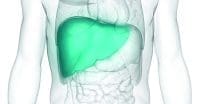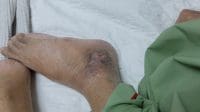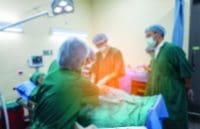Stopping infection requires effective discharge teaching.
Takeaways:
- Executing a successful discharge is the ultimate goal for all involved in the perioperative process.
- An interprofessional approach to discharge education ensures optimal patient outcomes, including prevention of surgical site infections and reduced readmission rates.
- A variety of resources and technologies are available to evaluate and improve discharge education efforts.
By Jill McCabe, MSN, RN; Erika Stevens, BSN, RN; Felicia Stewart, DNP, FNP-C; Jan Paauwe-Weust, DNP, RN
Most patients comply with preoperative instructions, and the surgery usually is performed as planned without incident. However, the same effectiveness can’t be said for the discharge process. Many ambulatory surgical patients are discharged within hours of admission, leaving little time for proper patient education. Rather than focusing on opportunities for self-care education, surgical site infection (SSI) prevention strategies frequently center around medical interventions to reduce infection risk factors. Being discharged without critical self-care instructions increases the risk for developing a preventable SSI. (See SSI primer.)
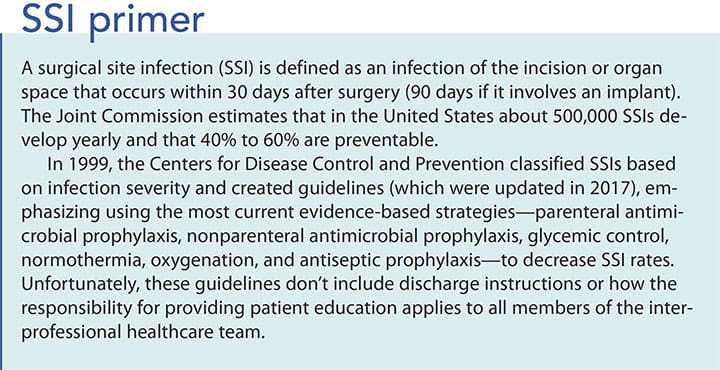
When a patient is ready for discharge, postoperative care is transitioned from the hospital staff to the patient and family. Because this process is task-oriented and primarily focuses on wound care, medication reconciliation, device management, and whether follow-up appointments have been made, actual readiness for discharge may be overlooked. Additionally, the patient and family perception of discharge readiness may differ from that of the healthcare team. Knier and colleagues, who conducted a prospective cohort study with 400 participants, determined that almost 20% of patients experienced adverse events, including healthcare-associated infections (HAIs) within 30 days after discharge, 6% of which “were deemed preventable and related to the quality of discharge teaching.” Because so many of these infections are preventable, prevention—including discharge instructions—must be addressed by all healthcare professionals who care for surgical patients.
Adopt a diverse approach
Because of the complex causes of SSIs, their prevention requires a diverse approach. Begin your efforts at reducing SSIs by evaluating your organization’s written discharge instructions and identifying methods to deliver and reinforce patient teaching throughout the continuum of care. In addition, review available resources and technologies to create even more opportunities for the entire healthcare team to collaborate for successful discharge and recovery. (See Engage patients with technology.)
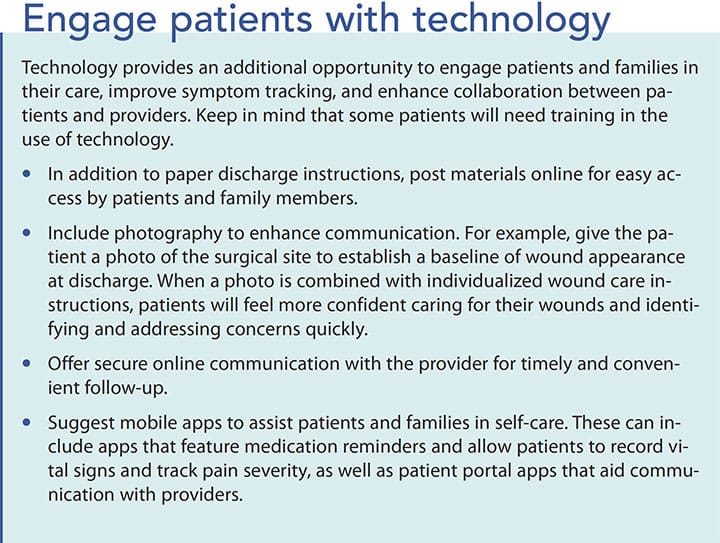
Review discharge materials
Are your organization’s discharge instructions and patient educational materials easy to understand? To find out, you can use the Patient Education Materials Assessment Tool (PEMAT) to examine them for understandability and actionability. Understandability focuses on clarity, organization, layout, and the use of visual aids. Actionability requires a clear patient action and incorporates tangible tools, such as a checklist. Then review the information from the perspective of the U.S. Department of Health and Human Services recommendations to ensure that the materials are written at a sixth-grade level and that each section is fewer than 50 words. These strategies can help your organization optimize its current patient education materials and guide development of new teaching resources.
Use assessment tools
Patient readiness for discharge can be evaluated using instruments such as the Quality of Discharge Teaching Scale (QDTS) and the Readiness for Hospital Discharge Scale (RHDS). Both tools can help you and your team assess patients’ perceptions of their educational preparation and readiness for discharge so you can address gaps in education. These tools also provide insight into common gaps, so education materials can be revised and future patient needs better anticipated. (See Tools you can use.)

The Discharge Process Acute Rehabilitation Transition (DePART) tool allows you to deliver education based on patient needs and readiness to learn throughout the entire hospital stay, rather than in the typical few hours leading up to discharge. This interprofessional approach to discharge planning maximizes patient, family, and provider engagement. Knier and colleagues used the QDTS and the RHDS to demonstrate the DePART’s effectiveness for improving patient satisfaction, readiness for discharge, and perceived quality of discharge.
The Martin Postoperative Discharge Screening Tool (MPOST) was designed to alert the multidisciplinary team to act and address any early signs of surgical complications before discharge. The tool incorporates variables such as routine vital signs; wound bleeding; genital, urinary, and GI system indicators; fluid balance; abnormal labs; pain level; activity expectations; mental status; and the ability to comply with discharge instructions. Using this tool 90 minutes before discharge gives you an opportunity to notify the healthcare team of an unacceptable MPOST score so discharge plan modifications can be investigated. When this tool was used in a study focusing on preventing premature discharges to home, the investigators found a 380% reduction in 30-day readmissions resulting from postoperative complications.
Make a call
 A study of patient perceptions of the postoperative recovery process identified several common concerns, including postoperative pain, wound management, personal hygiene, exercise, and return to work expectations. The patients in the study also reported concern that they couldn’t adequately retain discharge instructions because of forgetfulness caused by anesthesia. Costantino and colleagues determined that a simple intervention, such as a follow-up phone call, was effective in reducing readmission rates and provided an opportunity to address concerns that weren’t identified before discharge. Additional items to explore during the phone call include reviewing signs and symptoms of infection, confirming a follow-up appointment has been scheduled and prescriptions have been filled, asking whether the patient needs more assistance with activities of daily living than anticipated, and answering any other health-related questions.
A study of patient perceptions of the postoperative recovery process identified several common concerns, including postoperative pain, wound management, personal hygiene, exercise, and return to work expectations. The patients in the study also reported concern that they couldn’t adequately retain discharge instructions because of forgetfulness caused by anesthesia. Costantino and colleagues determined that a simple intervention, such as a follow-up phone call, was effective in reducing readmission rates and provided an opportunity to address concerns that weren’t identified before discharge. Additional items to explore during the phone call include reviewing signs and symptoms of infection, confirming a follow-up appointment has been scheduled and prescriptions have been filled, asking whether the patient needs more assistance with activities of daily living than anticipated, and answering any other health-related questions.
When Constantino and colleagues included these additional items in their study examining the effect of postdischarge phone call follow-up on 30-day hospital readmissions, they identified reduced readmission rates and substantial overall cost savings. They also discovered a direct correlation between the follow-up calls and time elapsed since discharge—calls placed closer to the discharge date resulted in lower readmission rates. Those made in the first 24 to 48 hours after discharge were most effective in reducing readmission rates and calls placed on subsequent days—up to 14 days after discharge—were less effective.
Reduce failed discharge
Addressing SSI-related readmissions requires proper delivery of postdischarge instructions and recognition by the entire healthcare team that individualizing instructions is important to successful outcomes. Keep in mind that stress and emotions can limit a patient’s ability to fully comprehend instructions when they’re delivered only in the few hours before leaving the hospital or surgery center. And incorporate technology and other resources to engage patients and families in self-care after discharge.
All healthcare team members have an obligation to actively analyze systems that improve patient care and reduce SSIs. Evaluate education materials for understandability and actionability as well as adherence to health literacy guidelines. Developing and implementing an effective discharge plan that follows the patient throughout the perioperative process may provide the missing link for avoiding failed discharges.
Jill McCabe is the program director in the Hyperbaric Department at Restorix Health/ Hackensack UMC Mountainside Medical Center in Montclair, New Jersey. Erika Stevens is a staff nurse in the PACU and Postop Department at OrthoIndy Hospital in Indianapolis, Indiana. Felicia Stewart is an assistant professor at Indiana State University in Terre Haute and a family nurse practitioner at Wellness For Life in Terre Haute. Jan Paauwe-Weust is an assistant professor at Indiana State University in Terre Haute.
Selected references
Allen G. New CDC guideline for the prevention of surgical site infections. Am Nurse Today. 2017;12(8):6-10.
Berg K, Arestedt K, Kjellgren K. Postoperative recovery from the perspective of day surgery patients: A phenomenographic study. Int J Nurs Stud. 2013;50(12):1630-8.
Centers for Disease Control. Surgical site infection (SSI) event. January 2018.
Costantino ME, Frey B, Hall B, Painter P. The influence of a postdischarge intervention on reducing hospital readmissions in a Medicare population. Popul Health Manag. 2013;16(5):310-6.
Joint Commission, The. The Joint Commission’s Implementation Guide for NPSG.07.05.01 on Surgical Site Infections: The SSI Change Project. 2013.
Knier S, Stichler JF, Ferber L, Catterall K. Patients’ perceptions of the quality of discharge teaching and readiness for discharge. Rehabil Nurs. 2015;40(1):30-9.
Parker C, Griffith DH. Reducing hospital readmissions of postoperative patients with the martin postoperative discharge screening tool. J Nurs Adm. 2013;43(4):184-6.
Rochon M, Makhecha S, Morais C, et al. Quality improvement approach to reducing readmission for surgical site infection. Wounds UK. 2016;12(2):26-31.
Sanger PC, Hartzler A, Han SM, et al. Patient perspectives on post-discharge surgical site infections: Towards a patient-centered mobile health solution. PLoS One. 2014;9(12): e114016.
Umscheid CA, Mitchell MD, Doshi JA, Agarwal R, Williams K, Brennan, PJ. Estimating the proportion of healthcare-associated infections that are reasonably preventable and the related mortality and costs. Infect Control Hosp Epidemiol. 2011;32(2):101-14.
Zellmer C, Zimdars P, Parker S, Safdar N. Evaluating the usefulness of patient education materials on surgical site infection: A systematic assessment. Am J Infect Control. 2015;43(2):167-8.
ant4-Surgical Infection-322












